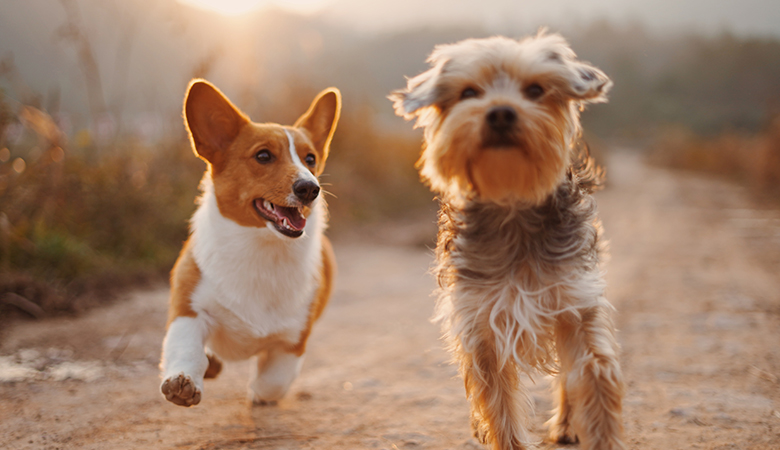Body Condition Score Dog and Cat
Written by |
Many pets are too heavy, without their pet owners knowing about it. In this article, we will explain how you can determine the Body Condition Score of your dog or cat.

Many pets are too heavy, without their pet owners knowing about it.
Obesity can be recognised by examining the following physical characteristics:
- Animals with a healthy weight have a recognisable waist if you observe them from above
- The stomach seen from the side should increase from the ribs.
- You should clearly feel the ribs if you apply light pressure to the ribs, vertebrae and hips. You should not see the ribs!
If your pets are too heavy, this can also affect their fitness. Animals that are too heavy usually get tired faster, can get overheated in summer and have a continuous desire to eat.
For humans, Body Mass Index (BMI) is used to determine one’s health. A similar system is also used for animals, which classifies animals in a particular weight category. This is called the Body Condition Score (BCS). This score can be divided into different scales that all have their related characteristics.

We will explain the BCS divided into 7 different scales.
Scale 1 (-70%) (very lean)
The ribs, vertebrae, pelvic bones and other protruding bone parts are already clearly visible from a distance and there is no body fat present. There is a clear loss of muscle mass and a raised belly is visible.
Scale 2 (-50%) (very lean)
The ribs, vertebrae and pelvic bones are pelvic bones are clearly visible, some protruding bone parts are visible from a distance. There is no layer of fat on the body and there is a limited amount of muscle mass. The belly is clearly tucked up.
Scale 3 (-20%) (underweight)
The ribs are easy to feel. There is no layer of fat present and ribs may be visible. The protruding bone parts may be visible. You pet has a clear waist and the belly is tucked up.
Scale 4 (healthy weight)
You can easily feel the ribs and these are covered with a thin/normal layer of fat. The waist is clearly visible from above and the belly is tucked up.
Scale 5 (+20%) (overweight)
The ribs are perceptible but are covered with a somewhat thick layer of fat. The waist can still be seen from above, but not as clearly as animals with a healthy weight. The belly is only slightly tucked up.
Scale 6 (+50%) (obese)
The ribs are hard to feel and are covered with a thick layer of fat. There is a clear layer of fat on the back and at the base of the tail. The waist is hardly visible. The Belly is hardly tucked up or not tucked up at all.
Scale 7 (70%) (obese)
Heavy fat deposits are present on the chest, back, and the base of the tail. It is not possible to feel the ribs anymore. The waist is not longer visible and the belly is no longer tucked up. You can also (clearly) see an increase in the size of the belly.



